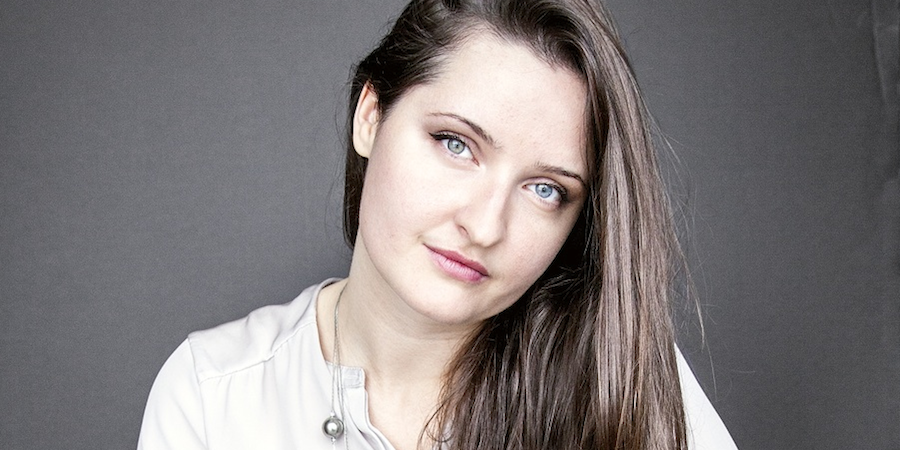Diana Lucaci launched her neuromarketing firm True Impact in a quest to find the hard facts beneath the gut-feeling decisions that drive even the most customer-centric of brands. At Marketing‘s upcoming AdTech Canada conference, the former 30 Under 30er is set to discuss why so many consumers are blocking ads (hint: they think they suck). But she offered Marketing an early look inside her high-tech approach to the topic, as well as a primer on what neuromarketing can do for a brand looking for engagement.
Your education was in psychology and neuroscience. What was it like moving from that very empirical, research-driven background into the marketing industry?
I’m comfortable when I have facts and make decisions based on that. I came to [marketing] with a respectful ignorance, asking, ‘Why are things done like that? Why don’t we have [better] metrics?’ Some of the answers I’d get back weren’t satisfactory. There was potential out there. We could have made better decisions if we’d taken more time at the beginning of a campaign to understand our customers a little bit more.
I’ve worked with non-profits and that really changed my view. When you see how difficult it is to conduct a fundraising campaign, when you have 30 cents per dollar that actually goes to a cause and out of that comes your marketing budget… When they’re spending $600,000 on an ad that flops, that’s heartbreaking because you know that money could have been spent in better ways.
So coming from a neuroscience background to a marketing background allowed me to have an outsider perspective. I wasn’t indoctrinated in the four Ps of marketing. I understand business, but let’s see how we get more value for the customer.
The Ad Blocking Debate: How Should Marketers Respond?
• Tickets are still available to AdTech Canada on March 29. Don’t miss out!
A lot of marketers seem to think the empirical side of marketing begins and ends with focus groups.
[We] had a lot of surveys, focus groups telling you what people are buying, but I never got a chance to find out why people do what they do. You gather people in a focus group situation, you bring out the beer and guess what? They start telling you what they think you want to hear. And you have to make a decision on a multimillion-dollar campaign based on that. I felt like I didn’t have enough to go on.
Neuroscience knows so much about how the mind works and how we make decisions. Why don’t we take a look at our biology first and design better communications that are relevant? That way they’re humanized.
That sounds like neuromarketing moves beyond “do you like this commercial?”
It’s too late by that point. If you claim to be a customer-centric organization, you really need to start understanding that customer from many angles: here’s what they’re telling you, but here’s what they’re not telling you. The conversation becomes more strategic around brands, the values that they want to represent… I want to bring this conversation more upstream into the creative stages and before that, before marketers even think about ‘should I do radio or print?’ Let’s look at the humans they’re actually talking to.
So you founded True Impact to jump back to the more quantitative side of the industry. Is there a way to quickly describe how you study human decision making?
There are three buckets of neuromarketing. The first is neuroscience, where we use fMRIs [functional magnetic resonance imaging], measuring blood flow in the brain. It tracks blood oxygenation levels; if you use a part of your brain more, it requires more oxygen and more blood will flow to it. And with the EEG [electroencephalogram], you’re measuring the electrical activity in the brain. It measures motivation: how likely are they to approach or avoid what they’re seeing? And from the EEG, you get metrics like cognitive load – how much effort your customers need to put in [to understand an ad]. If you’re message is super complicated, your cognitive load goes up and that’s not ideal. People don’t like to work.
The second bucket is biometrics like eye tracking – it’s only when you know where they look and how they feel that you get the big picture. And the third is what I call the “other” bucket, which is stuff like online tests that get the implicit bias towards certain brands. They’re more rooted in psychology.
Used in concert, what have these tools told you about effective marketing?
The formula for success, according to our research, is to use high-contrast imagery, a low volume of content that’s simple to understand, and to draw attention to your call to action. That last one is most important because most ads will showcase a beautiful model who’s looking right at the consumer. Guess what? We’ll all look at the model, but you’re not selling the model, you’re selling your brand. The eye won’t [see the brand] because we’re fascinated with this one feature: the model. Keep attention on your call to action, use high-contrast imagery, and keep your concept low. It depends on the medium of course.
What can we expect from your presentation at AdTech Canada?
At this event, I’m talking about ad blocking. I think the main thing everyone’s worried about is how to fight it, survive it. Well, just make better ads! Just focus on a message being delivered in a relevant, meaningful way to the customer… Trends are going to come and go. The tools will change. But what won’t change over time is our biology. It’s really worth slowing down the whole race to keep up with the latest trends to put more time into understanding who it is we’re speaking to.
Get an even deeper dive by looking at the AdTech Canada 2016 conference highlights in The Marketing Debrief.












You had me until “Just make better ads”.
Thursday, March 17 @ 8:16 am |